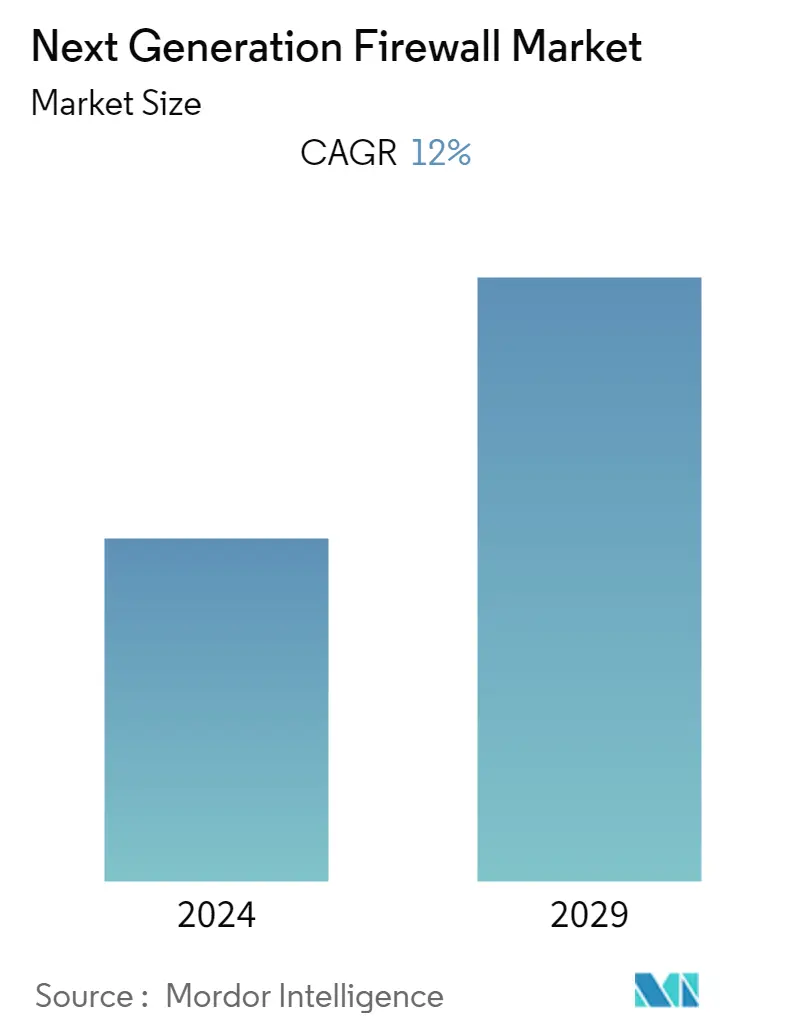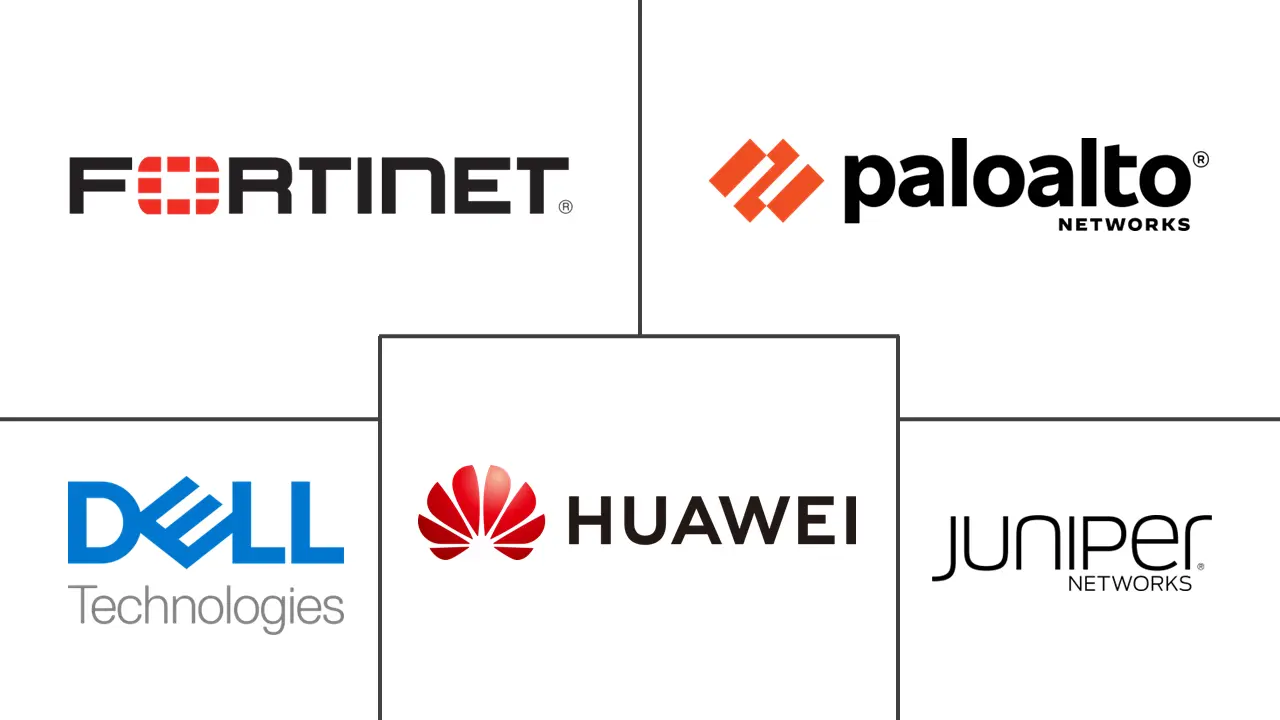Market Size of Next Generation Firewall Industry

| Study Period | 2021 - 2029 |
| Base Year For Estimation | 2023 |
| CAGR | 12.00 % |
| Fastest Growing Market | Asia Pacific |
| Largest Market | North America |
| Market Concentration | Medium |
Major Players
*Disclaimer: Major Players sorted in no particular order |
Need a report that reflects how COVID-19 has impacted this market and its growth?
Next Generation Firewall Market Analysis
The next generation firewall market is expected to register a CAGR of 12% over the forecast period.
- One of the primary factors driving the growth of the next-generation firewall market is the rising global adoption of the Internet of Things. The increased adoption of next-generation firewalls for effectively managing logs while preserving the integrity and better business continuity and the increasing demand for dealing with massive amounts of computer-generated log data drive market expansion.
- Adopting next-generation security solutions helps increase the company's product and operational efficiencies. Machine learning, artificial intelligence (AI), and tighter network connectivity are used in next-generation endpoint security to provide more comprehensive and adaptable protection. Next-generation security systems use real-time user and system behavior analysis to examine executables. Existing security technologies advancing toward context-aware computing technology enable businesses to recognize sophisticated threats. Payment problems caused by system failures in IT infrastructure can disrupt global commerce, while network connection loss affects government functions such as law enforcement. Over the projected period, this aspect is expected to generate possibilities for next-generation firewall vendors.
- Internet-based cybersecurity tools are available and commonly utilized to defend cloud-based applications. More internet usage increases the likelihood of data breaches and simple data manipulation, which is impossible in an internal security system. As a result, organizations need to start using internet-based security solutions or revealing internet firewall management tools. Providers provide clear and multifactor safety solutions for an acceptable level of protection. Businesses must also plan for potential DoS (Denial-of-Service) attacks. However, it is relatively difficult to identify these attacks by security analytics solutions without proper protective measures and solutions. As a result, demand for next-generation firewall systems is likely to rise to maintain robust and efficient security systems.
- The companies are incorporating new applications/Solutions in their products to meet customers' demands. For instance, in July 2021, The FortiGate 3500F next-generation firewall (NGFW) was announced by Fortinet, a prominent player of comprehensive, integrated, and automated cybersecurity solutions, to defend enterprises with hybrid data centers from the ever-growing threat landscape and ransomware attacks. The FortiGate 3500F has some of the highest performance metrics in the business, incorporating TLS1.3 and automated threat protection after encryption. With its security-driven networking strategy, the FortiGate 3500F also includes zero-trust network access (ZTNA) capabilities, ensuring consistent security and a seamless user experience for any user at any location.
- Several constraints in the next-generation firewall market are preventing it from growing. A next-generation firewall is highly effective but expensive, making it difficult for medium-sized businesses to buy it. One of the primary constraints in the next-generation firewall is the high cost of systems. Because of the high cost of the systems, only large corporations can afford to use them. Another market limitation is that small and medium firms use traditional methods and antiquated technology and want to keep their technology the same, which constitutes a market restraint.
- Government agencies are allotting strategic funds to strengthen their digital interface in the post-pandemic era. For instance, In 2021, following recent hospital breaches, French President Emmanuel Macron announced a plan to invest EUR 1 billion (USD 1.2 billion) to strengthen cybersecurity in France, with EUR 350 million (approx. USD 400 million USD) set aside for hospitals.
